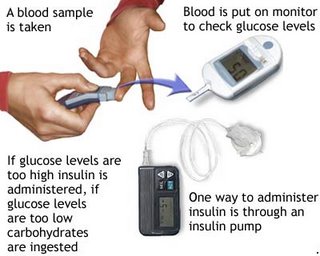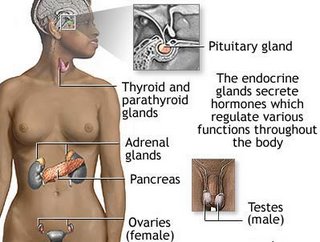What is Diabetes?
Diabetes Mellitus is a disease that results in high blood glucose levels due to the body's inability to utilize the hormone insulin properly. Our bodies need glucose in order to fuel our body cells. The brain relies almost exclusively on glucose for energy, which is why our bodies are so sensitive to changes in blood sugar levels.
After a meal, your bloodstream is flooded with glucose from the breakdown of carbohydrates. Your blood sugar begins to rise which triggers the pancreas to secrete insulin. Insulin helps store the glucose in our body cells for energy. A normal blood glucose level is 60-110 mg/dl. Diabetes is diagnosed with a fasting blood glucose level of 126 mg/dl or higher.

What is the difference between Type I and Type II Diabetes?
Type I - typically arises in childhood or early adulthood and occurs when the pancreas is unable to produce a sufficient amount of insulin. Most cases are diagnosed before the age of 30. This population must receive insulin via injection or an insulin pump.

Type II - often referred to as adult onset diabetes, usually occurs after the age of 30*. This type may produce some insulin, however the body's cells have become resistant to insulin and this prevents glucose from entering the cells. Metaphorically speaking, the insulin in a person with type II diabetes is trying to open the doors of the cells, but the cells won't let it in. This is what scientists refer to as "insulin resistant". When cells become insulin resistant, blood glucose and insulin levels rise and eventually lead to many complications. For instance, uncontrolled glucose levels can damage the large blood vessels leading to the heart (coronary heart disease) and the extremities (peripheral vascular disease), the eyes retinopathy, nerves (neuropathy) and the kidneys (nephropathy). Ultimately, the pancreas wears out after years of being in overdrive, pumping out more and more insulin to get through the cell doors. Eventually production of insulin will stop and insulin shots will need to be given.
* Recent studies have shown that type II diabetes is showing up in children and young adults due to the increase in obesity in this age group.

0 Comments:
Post a Comment
<< Home